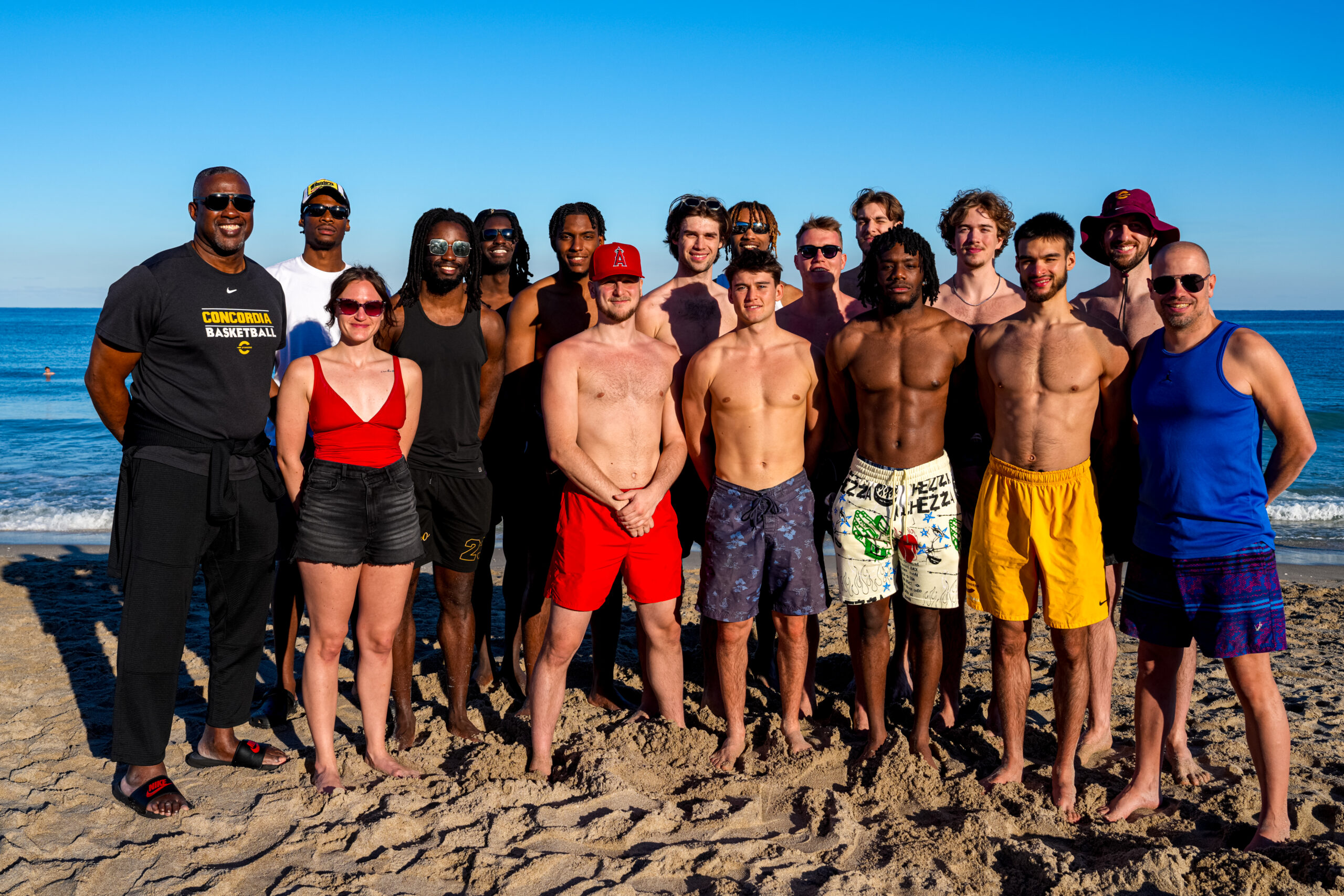The team maintains the tradition of playing exhibition games and team-practices in Florida for a week.
The men’s Stingers basketball team holds a yearly tradition, where the squad travels over the new year, in order to practice as a team and compete in friendly matches against schools outside of the RSEQ. For over a decade, the team has alternated between traveling to Nova Scotia to participate in Dalhousie University’s Shoveller Memorial Tournament, and playing exhibition games in Florida. As the Stingers flew east to play in the Maritimes last year, it was time to fly south and have fun in the sun to play in the Keiser New Year’s Classic tournament.
The team flew down on Dec. 26, and had an action-packed week-long trip. With the connections that Concordia Athletics had built in Florida for over a decade, the team had access to a gym at almost all times in order to shoot around. “Some days we’ll go in the morning, shoot for an hour and come back at night. Practice for two hours on game day,” said head coach Raskto Popović. “We’d have a shoot-around in the morning and then play a game at night.”
A main component of the trip involved trial and error in gametime situations by playing exhibition games against local universities in the Classic tournament. The Stingers faced three teams in the Sun Conference exhibition games. Concordia faced Keiser University on Dec. 29 (L 84-73), and two unfamiliar opponents in Ave Maria University on Dec. 30 (W 79-76), and Florida Memorial University on Jan. 2 (L 68-74). Although the Stingers only won their second game, it was a win over one of the highest scoring teams in the nation, who are currently averaging a whopping 97.4 points per game.
Carleton University, who had been attending the New Year’s Classic for even longer than Concordia, agreed to participate in a conjoined practice with the Stingers, followed by a scrimmage.
“You want to go there and you want to play against good teams and get good competition,” said the Stingers head coach. “That’s the way to get better. Between those three games of high quality teams and the Carlton scrimmage, we really got a chance to practice, try different lineups, get different people in, and accomplish the goal of getting better over the Christmas break.”
In between practices, the squad engaged in all sorts of activities, such as afternoons at the beach, shopping, and team dinners. “Team bonding is a very important thing as well on this trip,” emphasized coach Popović. “We mix up guys in different rooms so guys can hang out and get to know each other. This whole trip is so good for us, and we’re so lucky and appreciative to have alumni who support us so we can afford this trip.”
Among their final activities of the trip, the group went to watch UMiami beat Clemson on Jan. 3 by a decisive score of 95-82. After the game, players met with UMiami shooting guard Kyshawn George, who’s father, Deon, was an ex-teammate of Stingers assistant coach Dwight Walton.
Newly arrived forwards Gabriel Bourdages and Ba-Amara Djame especially capitalized off of the redeeming components of the stay. Not only were they able to practice with their team, but they were also becoming familiar with players off of the court.
